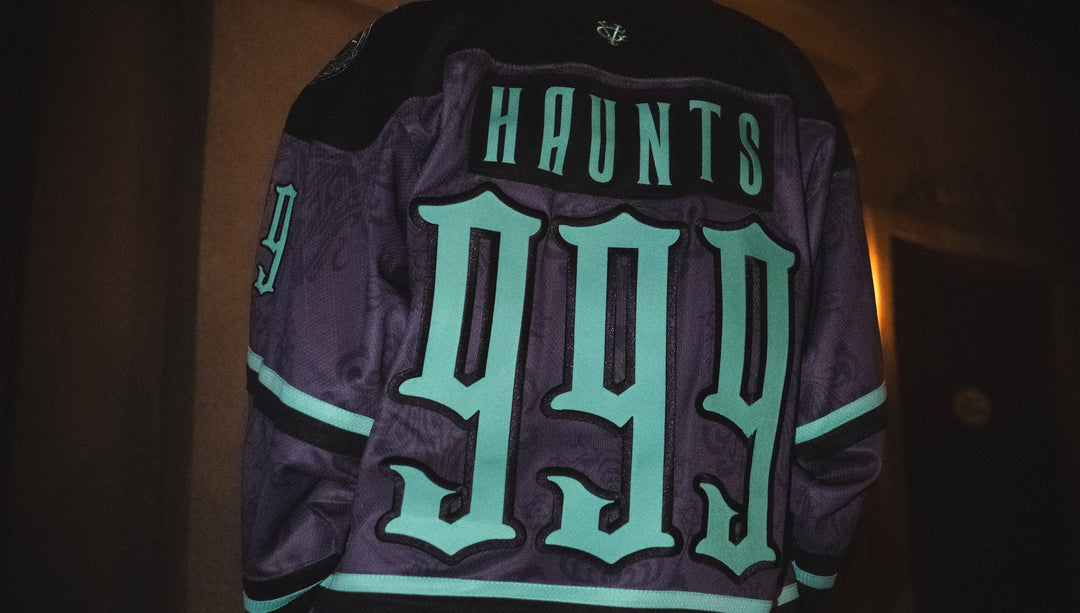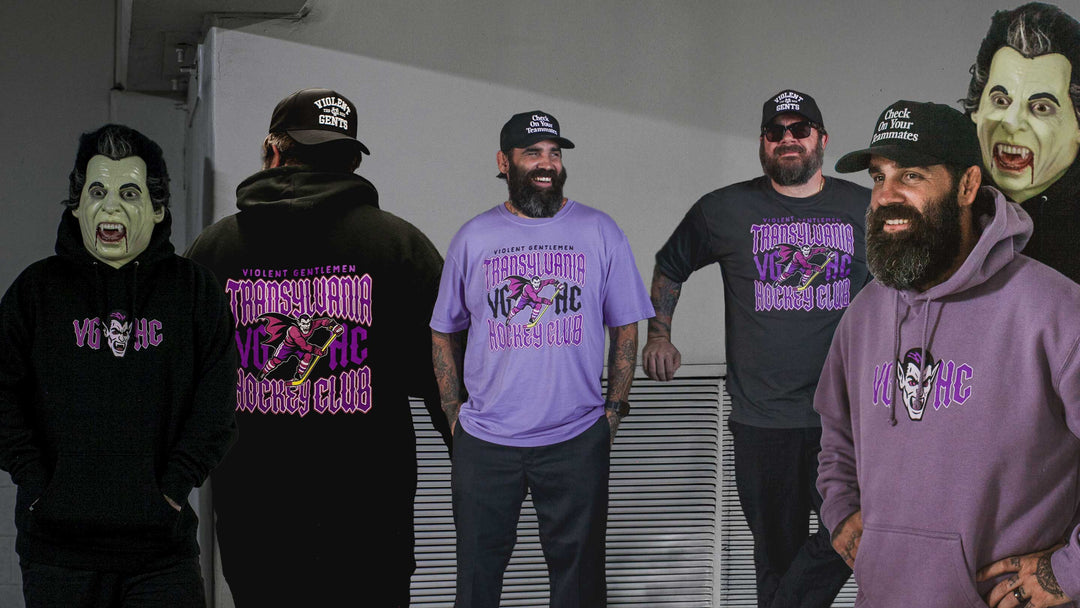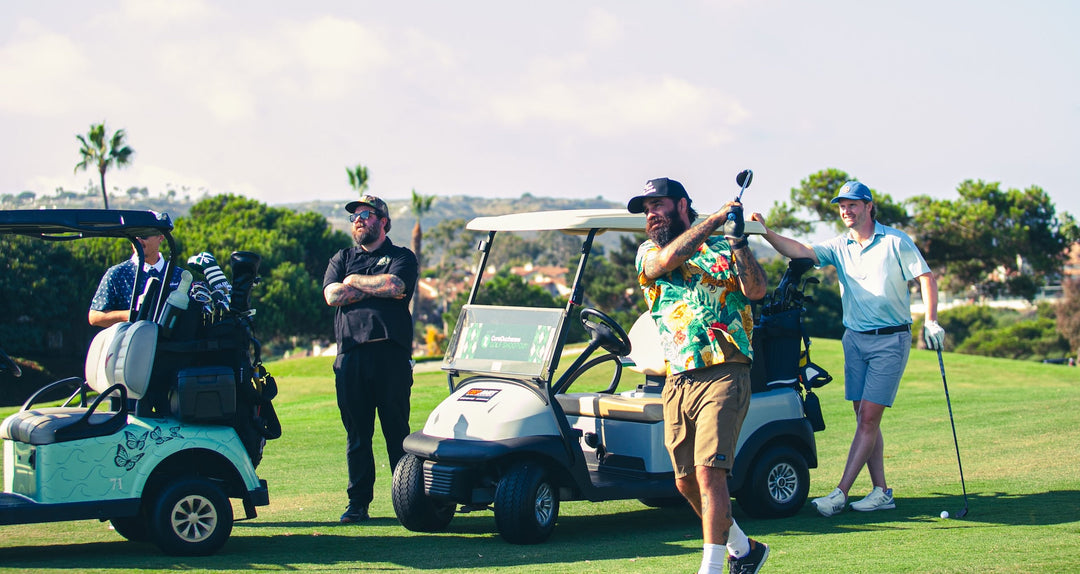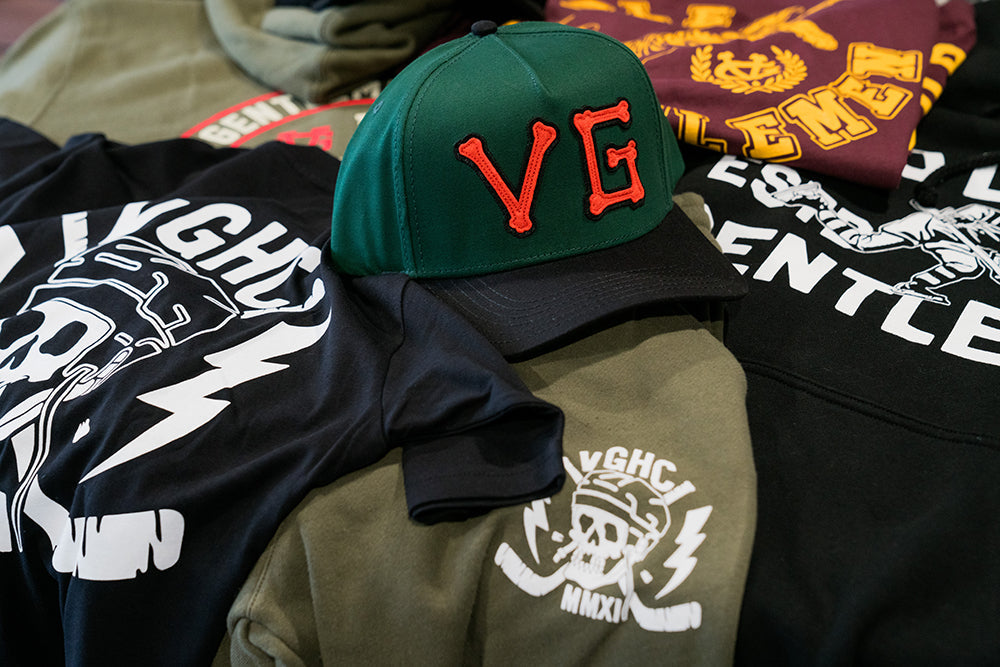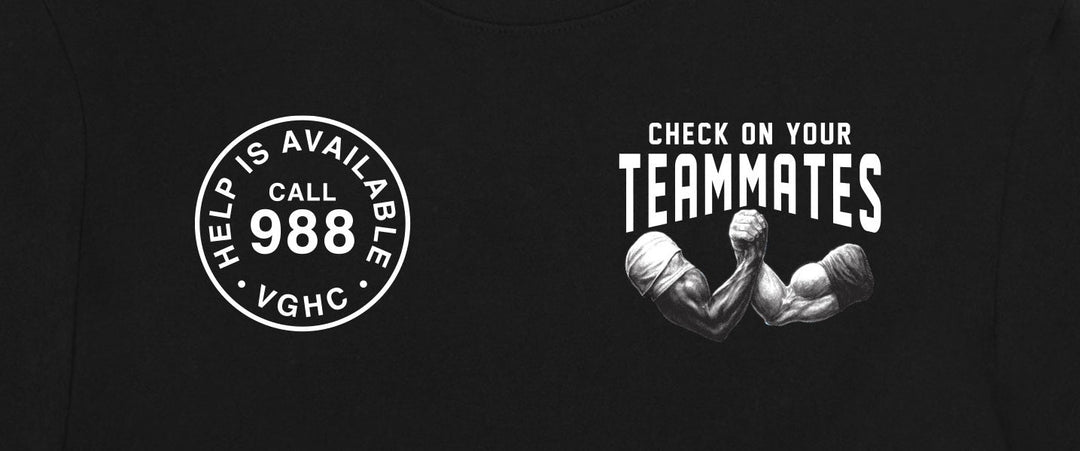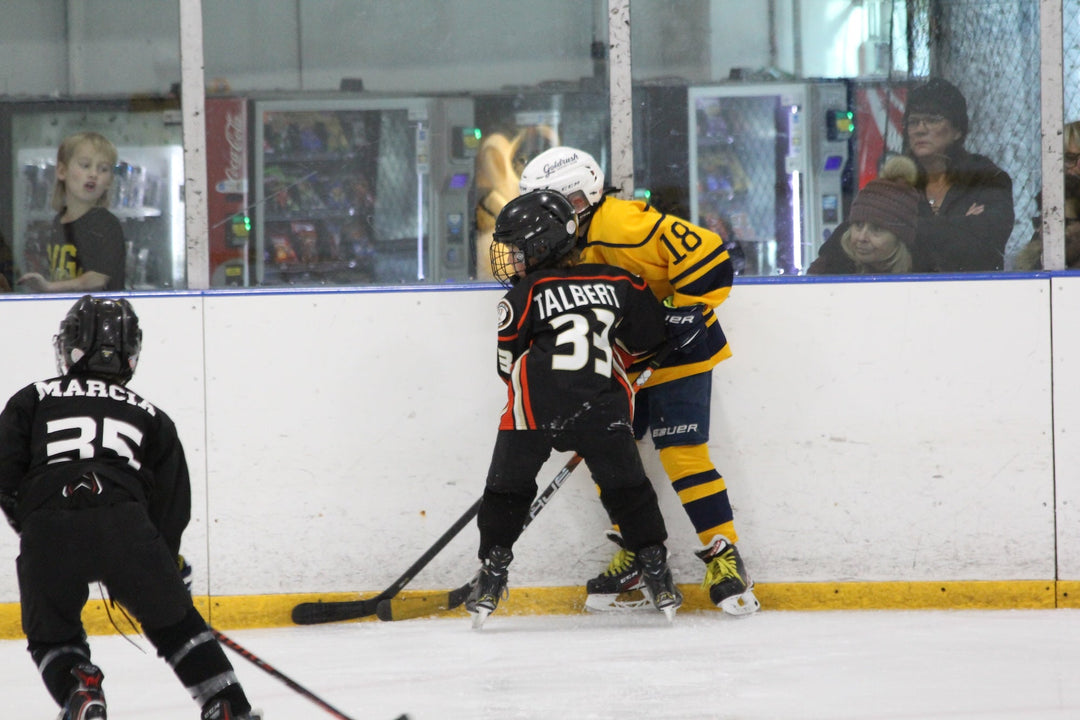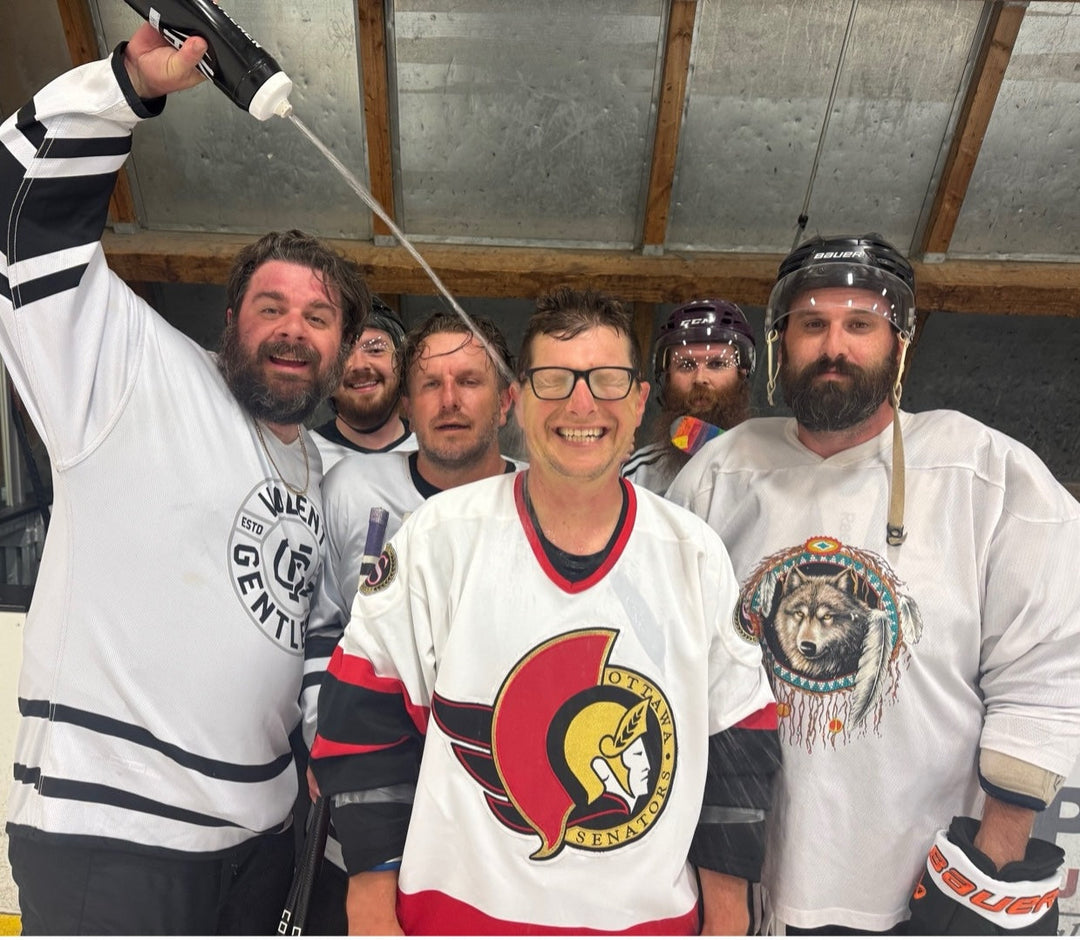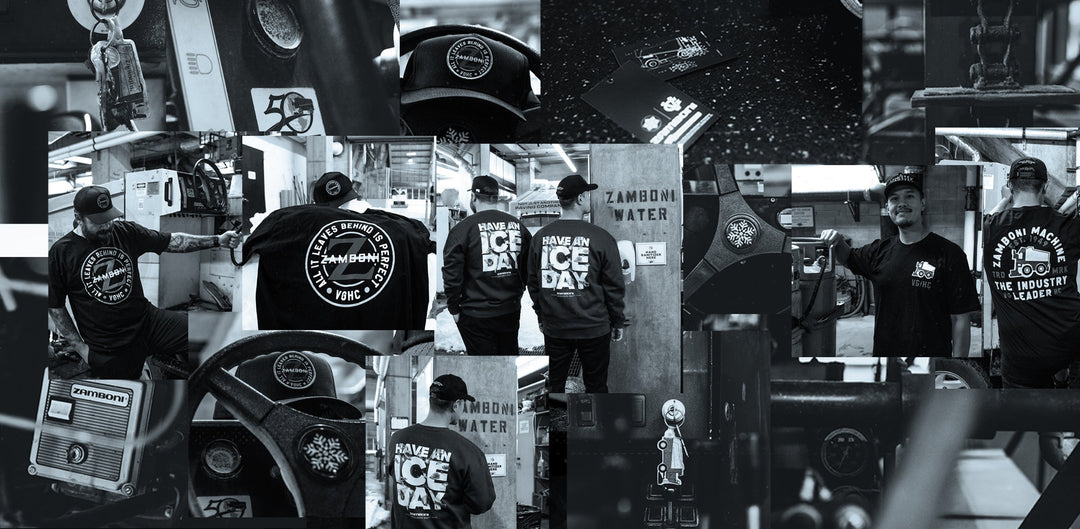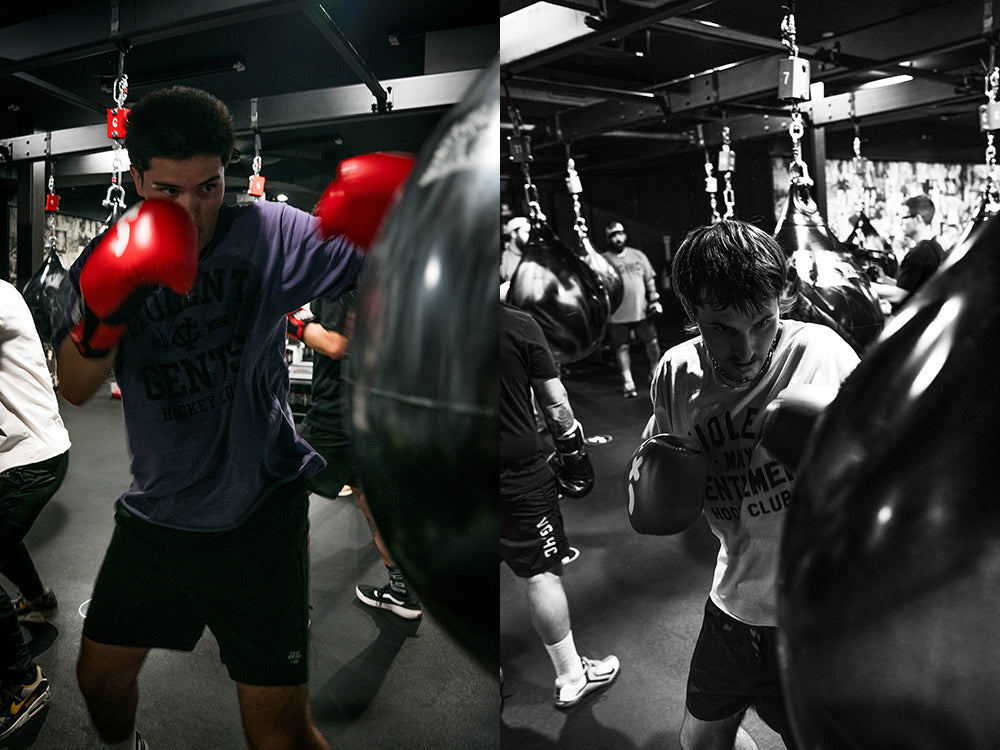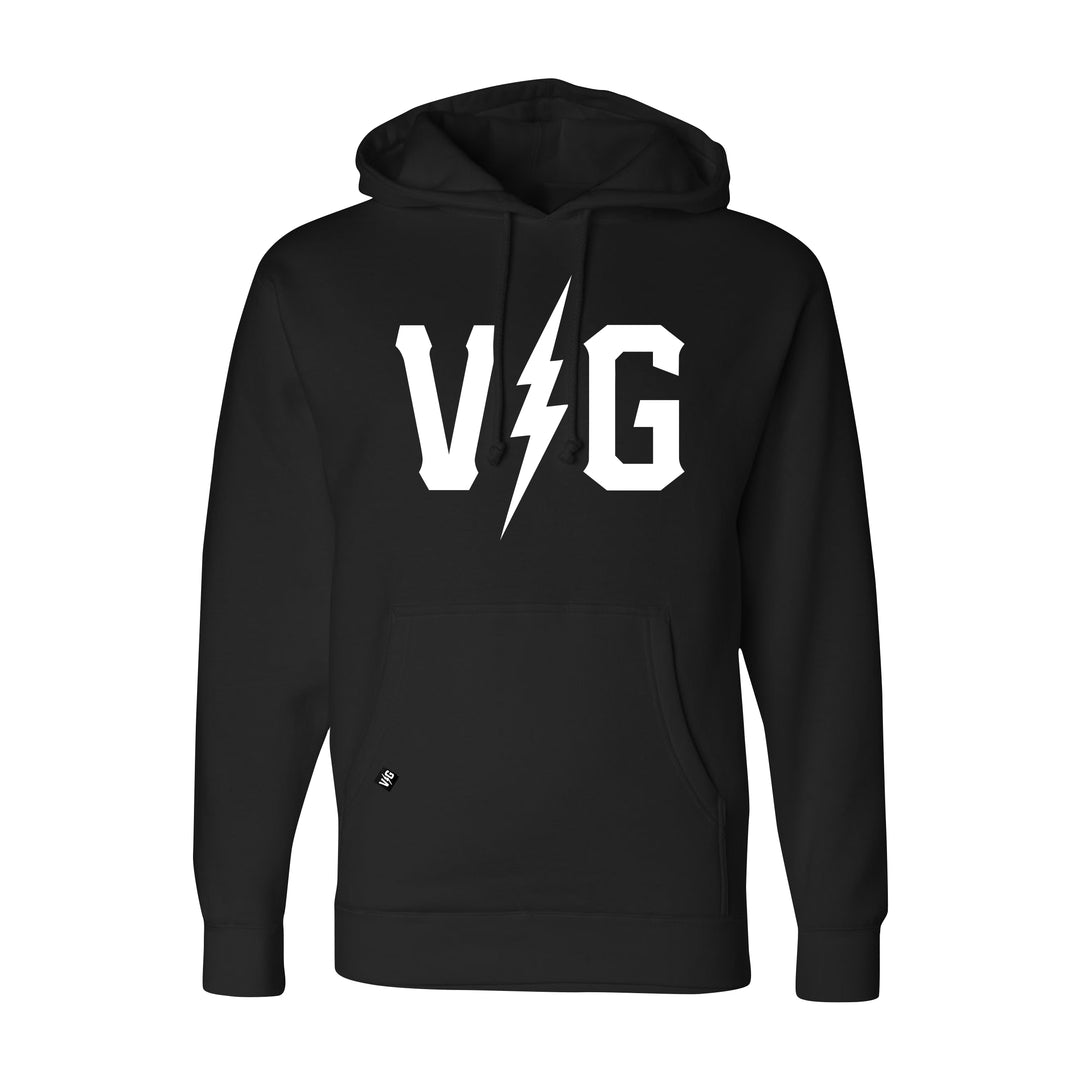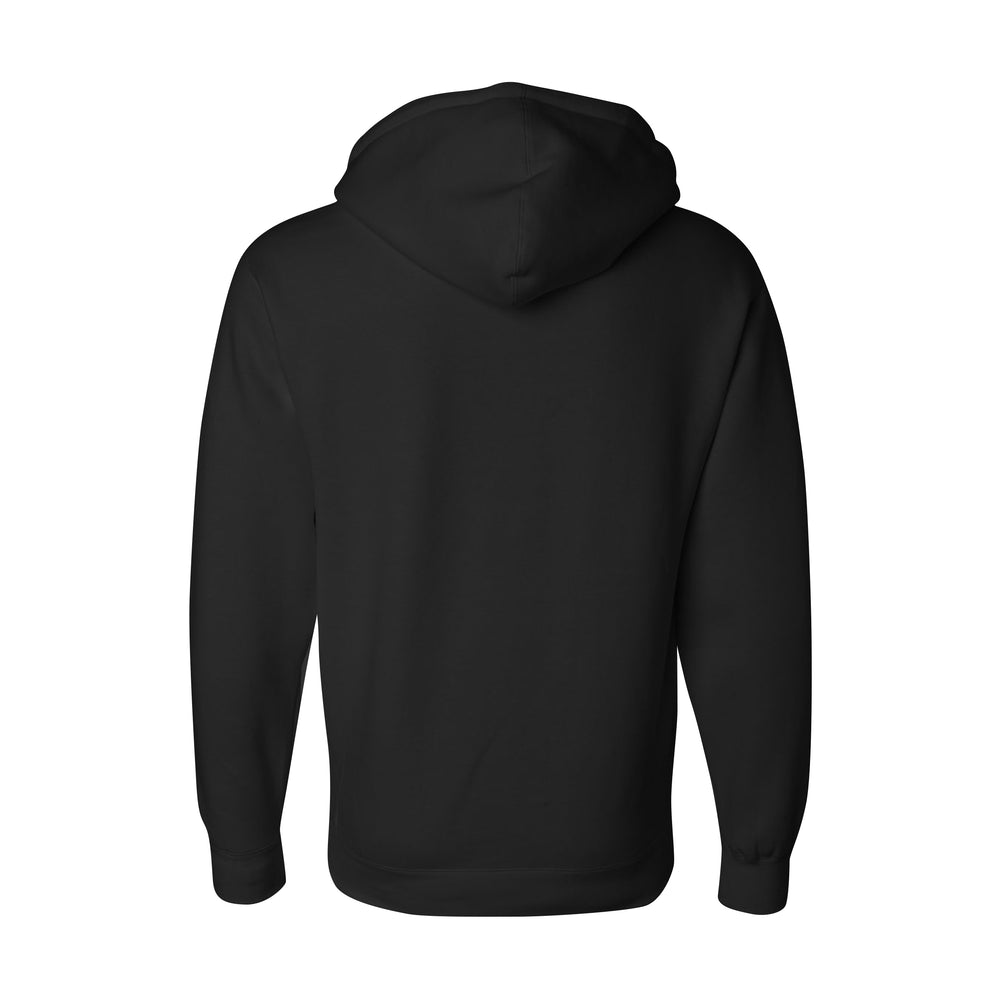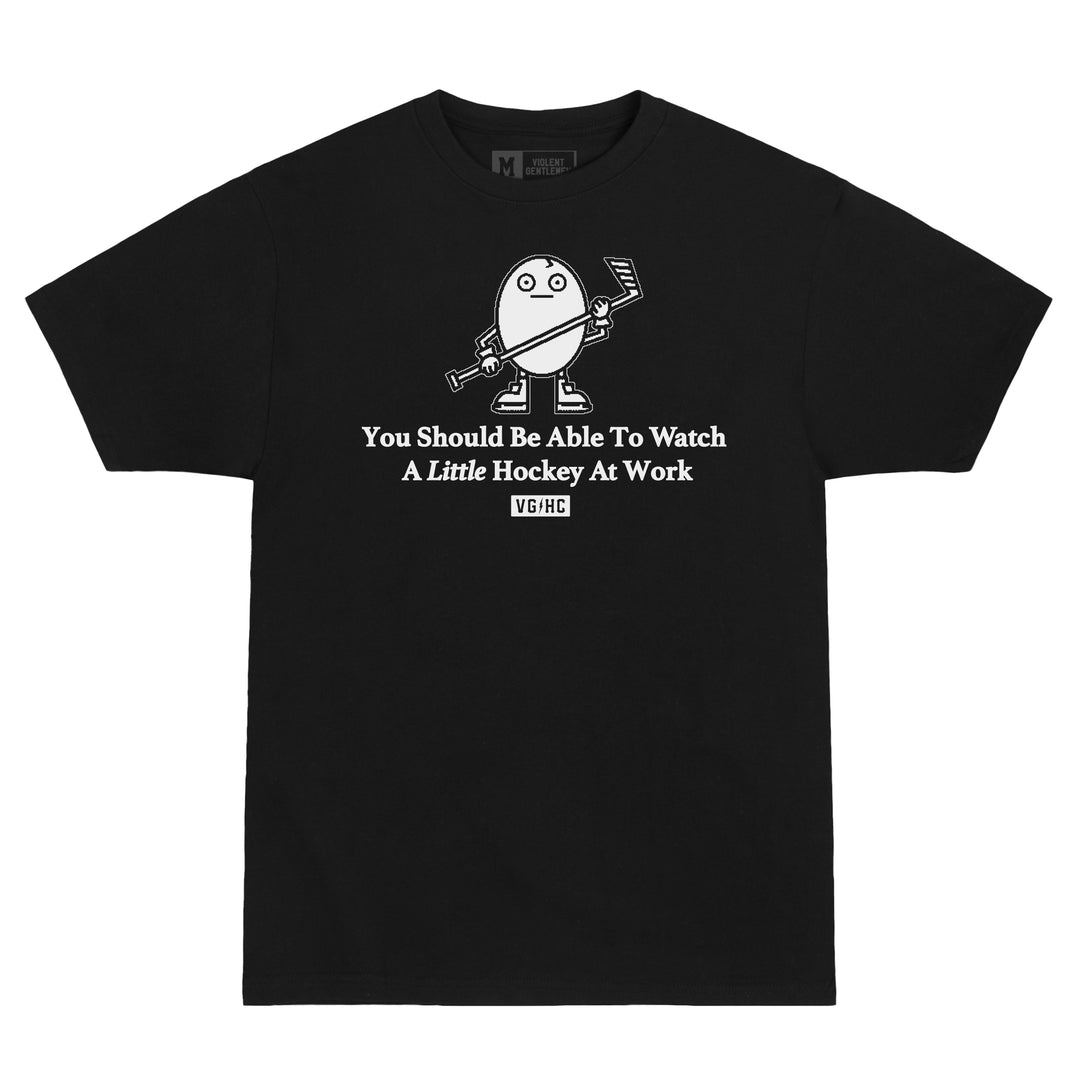Tales of Violent Gentlemen: Colton Orr
Colton Orr didn’t learn how to skate until he was 11 years old. Growing up in Winnipeg, Manitoba, you would think that that would have put him at a disadvantage in hockey when many of his peers had been on the ice since they were in diapers, but that wasn't the case. Despite his late entry into the sport, Orr discovered he had a knack for it, particularly when it came to dropping the gloves.
After playing four years of junior in the Western Hockey League, where he racked up 570 penalty minutes, 30 times the number of goals he had scored, Orr went undrafted in the NHL. Nevertheless, after signing with the Boston Bruins organization as a free agent, Orr made his NHL debut against the Pittsburgh Penguins on January 8, 2004.
Following the 2004-05 lockout, after being waived by the Bruins, Orr was claimed by the Rangers and established himself as a full-time NHLer with the Blueshirts, holding his own against heavyweights like Donald Brashear and Brian McGrattan. After three years on Broadway, he signed a four-year deal with the Maple Leafs and played six more years of professional hockey in Toronto before he officially retired in 2016. By the time Orr hung up his skates, he had played in 477 NHL games, accumulated 1,186 penalty minutes, and scored 12 goals. Quite the professional hockey career for a guy who had only picked up the sport in his adolescence.
Today, Orr is still involved in hockey. When he’s not nurturing his daughter Charlotte’s burgeoning interest in the game, he’s hitting the ice with the Rangers’ alumni and doing some broadcasting work with his former teams in New York and Toronto. Violent Gentlemen spoke to Orr by telephone about his NHL career as an enforcer, where he sees fighting in the NHL today, his big screen cameo, and his future aspirations.
*****
Someone once tried to tell me that you can’t be a violent gentleman because the concept is inherently contradictory. What do you make of that?
Colton Orr: The way I look at it, and you always hear guys like heavyweights and enforcers talking about it, we had a code and we tried to carry ourselves a certain way. Yeah, we were fighting and it was bare-knuckle – pretty much street fighting on the ice – but there’s still respect for the other guy and what he was doing. We always tried to be pretty honest for the most part. We kind of left it all on the ice. There were never any hard feelings. I’m buddies with half the guys I fought, I talk to a lot of them now. The way I look at it, we always tried to keep a code and try not to let that define you. Yeah, we were fighters and we fought, but that doesn’t make me some lunatic that thinks he needs to fight off the ice or anywhere else. It’s what we did as a job and that was our role. That was something we took pride in. We kept our team safe, but we still kept some sort of ethical code where we didn’t want to cross the line and make it dirty or cheap. That’s just the way I’ve always looked at it.
Looking back on your NHL career as an enforcer, who was the toughest opponent you ever faced?
CO: The one who always gave me the most trouble was Donald Brashear. He was big. He was 6-foot-4 and had a big left. When I was with the Rangers and he was in Washington, we had quite the battles. He just always seemed to get the upper hand. I always had to be ready for him. But there were so many big guys like that who were fighting. I wasn’t a big guy, I was 6’2” and some of these guys I was fighting were 6’5.” George Parros and Brian McGrattan were both 6’5,” they were big men. So, for me, Brashear, Parros, and McGrattan all come to mind as the toughest.

Fighting has declined significantly since you retired, where do you see the role of fighting in the NHL today?
CO: What I like about the game now is that all the fights are usually for a reason. They’re usually spur of the moment to take care of a guy for a cheap shot or for another reason. It’s not just an enforcer, there are skilled players fighting. There are a lot more random fights that you wouldn’t expect because of how the game has changed and how much faster it’s gotten.
I think it’s always going to be part of the game. You always need to answer to somebody when you cross the line. Being able to find a guy who can play like that is important. If you look at Tom Wilson in Washington, for example, he’s a guy who can play on the first line, but he’s a pretty tough kid who can take care of himself and his teammates. So, you look for guys like that who can play, but also can take care of fighting and intimidation when needed.
Knowing what you now know about CTE and the long-term effects of concussions, would you change anything about your hockey career?
CO: The way I look at it, I played in the best league in the world. I got to play in the NHL. For me, to be able to have that opportunity to make the NHL and play 10 years in that league and 14 years as a pro, that was a dream. To have that opportunity, I was willing to do what it took. But having that knowledge now, and having a son, that’s not something I’d want him to be doing. I definitely wouldn’t want to see my son put in those situations, especially with what we know now.
But I wouldn’t change what I did. I enjoyed what I did and I have always taken pride in protecting my teammates and making sure I gave them more room on the ice. It was a role I really enjoyed, but you do think about the shots you took and what it’s going to be like. Hopefully, they continue to do research moving forward to make sure they are protecting the players properly because it is such a big issue.
If you were Head of Player Safety, what would be one thing you would do to make the game safer?
CO: First of all, I have to tip my hat to George [Parros]. He’s been doing a great job there. It’s not an easy role to do. For me, to make the game safer, it’s along the lines of what they’re doing now. You need to eliminate unnecessary headshots. The targeting of the head and blindsided late hits are not needed. Especially now when there’s not as much of an intimidation factor because maybe they don’t have to deal with fighting someone now. So, when the league comes in, being strict is very important because they don’t have that deterrent there as much. Coming down on them harshly is the only way to go about it and make sure everybody on the ice is safe.
You had the chance to drop the gloves on the silver screen when you landed a role in Goon 2: Last of the Enforcers, how did that come about?
CO: I just received a call from one of the producers and he asked if I’d like to be a part of it, so I jumped on the opportunity. I really enjoyed Goon. My brother was an extra in it and it was filmed in Winnipeg. So, as soon as the producer called me and asked me if I wanted to be in it, I was in. I had no idea that all those other guys like George Parros and Georges Laraque were going to be involved in it. So, it was pretty fun to get there and see all those guys I’d be working with. In between takes on set is where I really got to know George Parros well. We were there trying to get this ten-second scene and we’re in our gear for two full days, so that’s where we really got to know each other. It was cool to see the other side of this guy who you had fought for years.

What’s your favorite hockey movie?
CO: I’m old school, I’m Slap Shot all the way. I like the Goon movies, obviously, but I’ve always been a Slap Shot guy. You still go into the dressing room and always hear quotes from Slap Shot.
You played your last NHL game in 2015, but you’re really involved with the New York Rangers alumni and playing benefit games with them, can you talk about some of those activities?
CO: I’ve been doing a lot of games since last year. We’re playing up in Brewster [February 24th], the area I live. We’re playing in support of this new high school girl’s hockey league that they’re trying to build here. The alumni have done some great work in the communities to support youth hockey and making it more affordable for the kids. We’ve done a lot of these alumni games for that and have raised over $600,000, which is pretty amazing for those programs.
Do you do any other youth hockey work outside of those Rangers’ alumni games?
CO: I’ve been doing a lot with the Rangers’ Learn to Play program. My daughter, Charlotte, she’s five now and she’s actually in the New York Rangers Learn to Play program in Brewster. She’s loving it and that’s why I really wanted to help out women’s and girl’s hockey because my daughter is just starting to play and eventually I’d like to see her, if she wants to, have leagues for her to play in.
You played most of your NHL career with the Rangers and Maple Leafs, now you’re doing some work in the media covering both those teams. What’s it like to watch them from the other side?
CO: It’s been great to see the Leafs since I’ve finished playing and how they have been able to transition and rebuild so quickly. Getting that organization on the winning path has been a lot of fun to watch. That young talent is just so fun to watch. They have so many young stars in [Auston] Matthews and [William] Nylander. I was able to play with both William and his Dad. I played with Michael in New York and then I played William in Toronto. So, it’s pretty cool to see some of these young kids you watched grow up become NHL superstars.
Seeing that kind of gives hope for New York. They’re going to go through their own rebuild now and you look at models like the Maple Leafs and teams that have turned it around pretty quickly. New York had a pretty good run, but now they’re going to switch gears and trade off some guys and make that youth transition that a lot of these teams are doing.
Do you see broadcasting as something you’d like to do for the long-term or could you see yourself transitioning into a role behind the bench or working in an NHL front office?
CO: I am definitely enjoying both sides of it. Doing the media has been a lot of fun. When I played I didn’t like speaking to the media too often. Now being on the other side of it, I can see the frustration of when you get a player who really wants to use clichés and the hockey rhetoric you always hear over and over. But I also do enjoy working with young players as well. I like working with youth programs and helping young players who are in that pro area make the jump from junior to pro. I’m very lucky to be able to do both right now, so I’m not really focusing on choosing what way to go just yet.
The Maple Leafs have certainly turned a corner the last few years. Do you think players are starting to see Toronto differently, especially when it comes time for free agency?
CO: You just need to look at the talent. You see the winning culture there and the management that they have with [Lou] Lamoriello, [Brendan] Shanahan, and [Mike] Babcock. All these guys who they brought in on the management side to work together has been enough to change the whole culture and make it a place that guys will look at more strongly. If you look at any organization that has talent and a winning record, that’s a team where people want to go. I know that one of the biggest deterrents about Toronto can be the media and how hard they can be on you when things aren’t going right. So, that’s still something that’s considered when going to Toronto is the media and how hard they can be on you, but when things are going well it definitely takes some of that pressure off.
Hockey’s a rough sport. Tempers flare and things can boil over even with the league’s most skilled players. With that in mind, who among Toronto’s Auston Matthews, William Nylander, and Mitch Marner gets into a fight first?
CO: I would have to say, Matthews. I could see him being the guy because he plays with an edge and he’s got that fire to his game and he’s so competitive. He’s a strong kid, too. He would be my pick for who would drop them first. I think the organization might freak out because you don’t want to see a guy going into a fight and break a hand on a helmet or something, but he plays so competitively. He’s a strong player and he’s not afraid to go into the corners and get the puck and hold onto it. I like his competitiveness.
He certainly demonstrated that when he blocked a shot late in a game against the Panthers, as much as that was nerve-racking for Maple Leafs fans.

CO: You’ve got guys to block shots for you. There are certain guys who get paid to block shots. I remember when I was in New York we had Blair Betts. That guy was one of the best defensive guys I had ever seen. He was so good at faceoffs and blocking shots. That’s why you get players like that so you can take the pressure off your star players from having to do it.
We’ll close out with a question from one of our readers on Twitter. Ryan Lancaster wants to know if there was any pressure in Toronto about wearing #28 and if you had ever talked with Tie Domi about it?
CO: It’s funny because Tie played in Winnipeg and I was always a big Jets fan growing up. It was never something I thought of when I went to Toronto because I had worn it with the Rangers. I wore it in Kamloops in junior, it was always just a number I had liked because I had associated it with tough guys like Domi, but I never felt any pressure that I had to live up to expectations in Toronto. But when I did get to Toronto, I did talk to him and I ended up going out to dinner with him and my wife. We just sat down and talked about being in Toronto and the way he played and everything he had done. It was kind of a mentor type thing and I still talk to him today. It was just a nice thing because he reached out to me. To have a guy who you watched as a kid reach out to you when you sign in Toronto is pretty cool.




